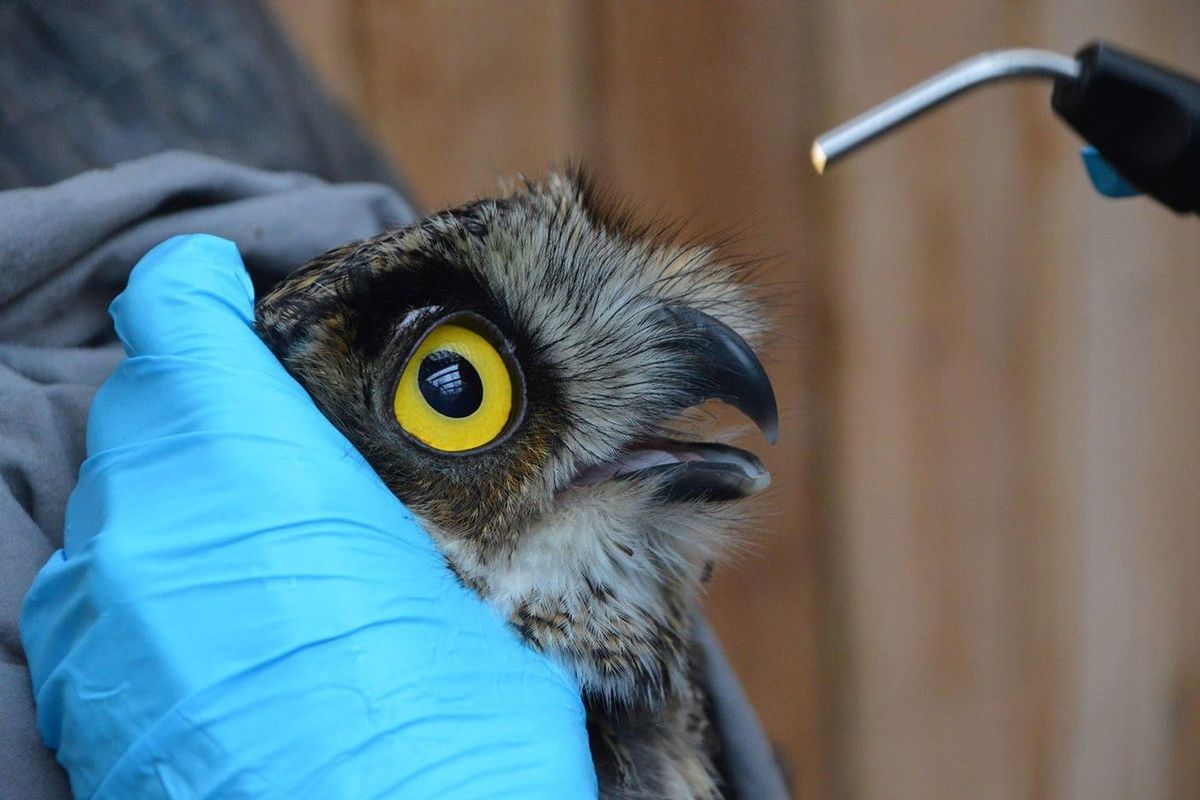This owl had an extraordinary survival story after a very bad day

A great horned owl can take down prey larger than itself: Skunks, wild turkeys, the occasional cat. Its sharp and powerful talons can crush its chosen dinner.
Among the few things that can take down a great horned owl are vehicles, which smack birds in the wrong place at the wrong time with a few tons of steel and highway-speed force. But no one told that to 2017-4242, the case number of one particularly resilient owl treated at a Seattle-area wildlife rehabilitation clinic this winter.
This bird survived being slammed by a Ford F-150 on a very chilly night.
Then it survived being wedged in the truck’s grille for nearly 300 miles.
Then it made it through a spraying and whizzing carwash – all while still stuck in that grille.
It was, to say the least, a very bad, very harrowing experience. After all of that, more than two months of rehabilitation for a mangled wing must have seemed like no big deal.
“Oh, he stood out,” said Jennifer Convy, director of the PAWS Wildlife Center in Lynnwood, Washington. “He’s unusual.”
The saga of this raptor – which the clinic staff referred to as “he,” though they did not determine gender – began when it arrived at PAWS in November. The center treats about 4,000 injured animals a year, half of them birds. This patient’s left humerus was broken, leaving its dappled gray wing “twisted around,” Convy said. The left of its piercing, golden eyes was dilated and had a hemorrhage, probably as a result of the truck’s impact.
A colleague of the driver had brought the owl in, Convy said, and relayed that he had been driving in Eastern Washington when he collided with a bird. Assuming it was a goner, he continued nearly 300 miles to a Seattle suburb, where he parked the truck overnight. The next day, the driver took the truck through a carwash – the kind “with frontal sprays, whirling brushes and concussive winds,” according to Audubon, which first reported the owl’s tale – and then drove to work. It was there that he noticed his licensed plate was bent and that something feathered and moving was near it.
The bird “was in pain,” Naomi Summer, that driver’s colleague, told Audubon. “Its wing was crumpled. It was cold and rainy. We really didn’t expect it to survive.”
But an examination at PAWS suggested otherwise. The owl’s humerus was still viable, the nerves were still intact and the circulation good, Convy said.
2017-4242 spent about a month with its broken, pinned wing wrapped to its body. After the wing had healed sufficiently, the bird underwent physical therapy, which for owls involves sedation, massage and stretching. It was moved to enclosures where it could practice flying and, eventually, hunting live mice. Predictably, the owl won.
“It did beautifully,” Convy said of the hunting trials.
The center has treated other birds trapped in grilles, but they typically don’t survive. “Usually when an animal like that goes through such an ordeal, just the shock itself and the trauma is enough to send it over the edge, unfortunately,” Convy said. The key to any wildlife rescue is getting the injured animal to a licensed rehab center quickly, which – epic road trip aside – happened fast enough in this case. Ironically, Convy added, the truck’s grille might have protected the owl from both the elements and the carwash’s highly chemical shower.
Earlier this year, a PAWS wildlife biologist and veterinarian drove the owl east over the Cascades, back to the region where its near-death experience began. A video shows the bird flying up to a leafless tree as honking geese soar overhead.
PAWS has dealt with other memorable cases, Convy noted. There was a large black bear that required hip surgery for a fractured femur before being returned to the great outdoors. Several seabirds, their feathers blackened by oil spills, have been cleaned up and released to the water. But in her 22 years at the center, she said she has never seen anything like 2017-4242.
“This owl was pretty popular here at the wildlife center, in that everyone was really rooting for the animal,” she said. “This’ll probably be a one-off.”